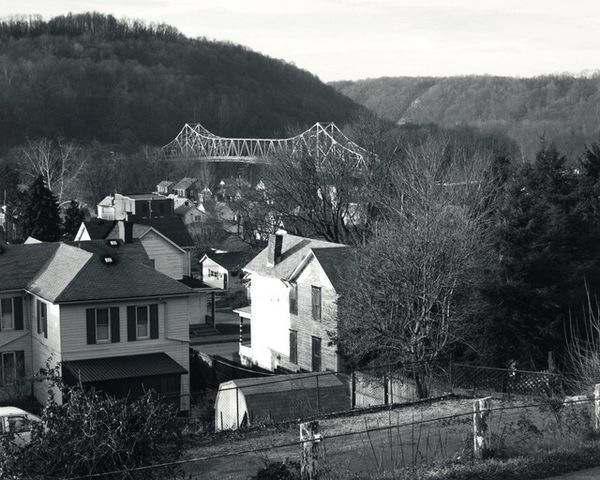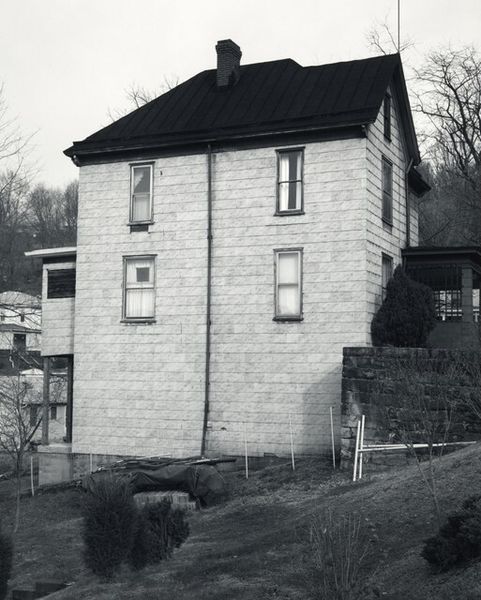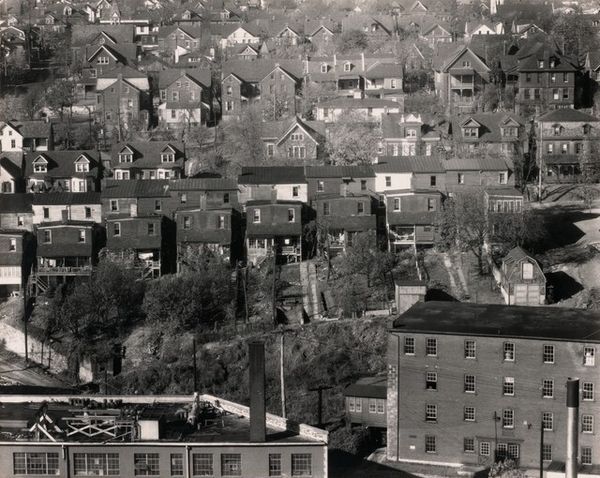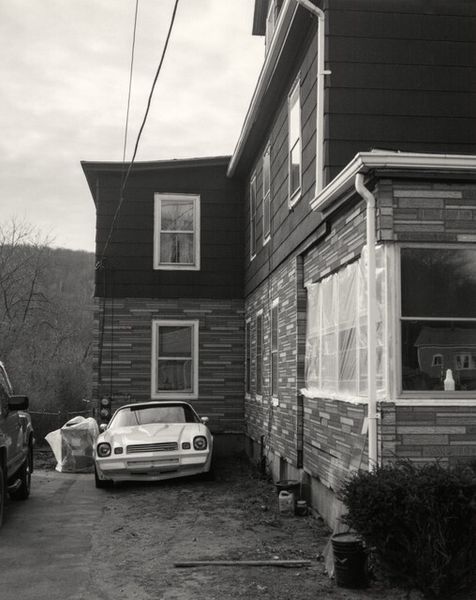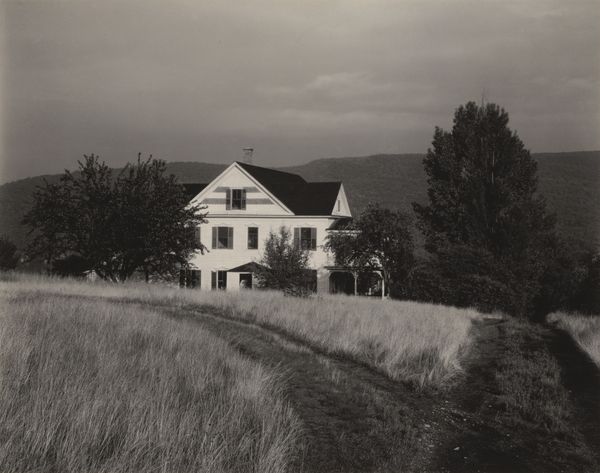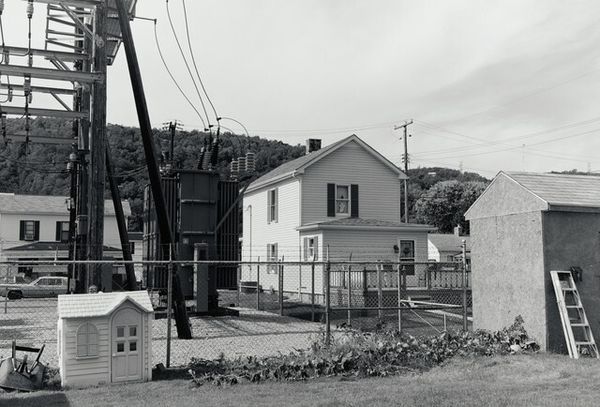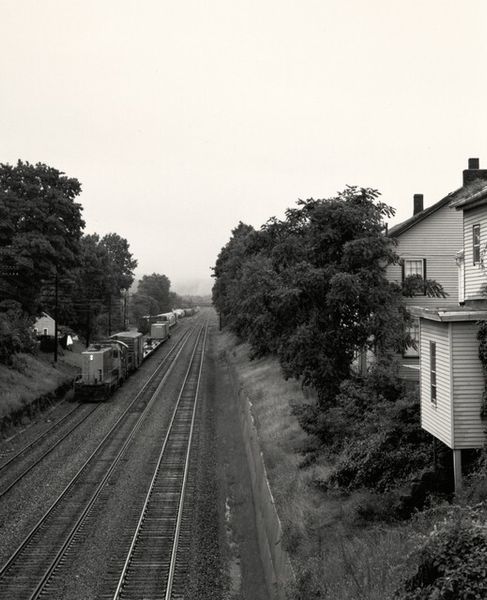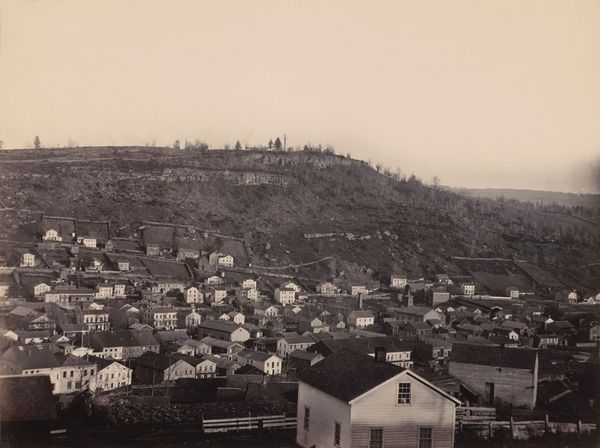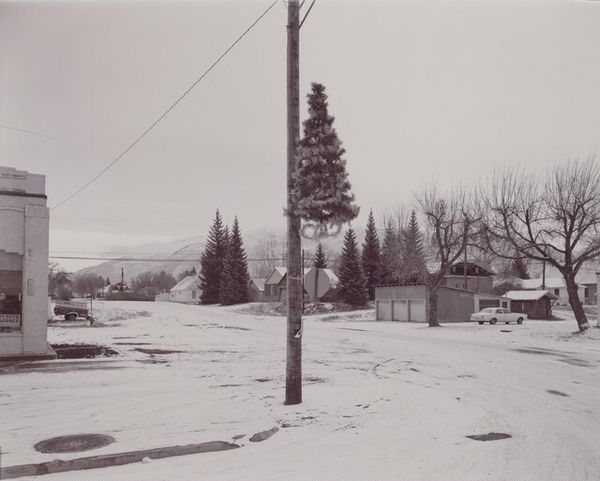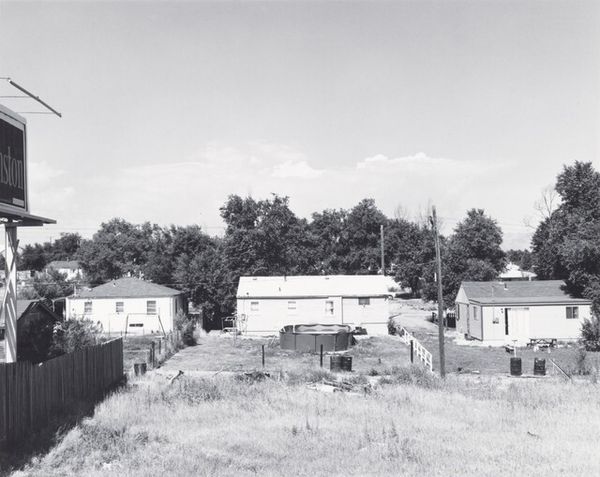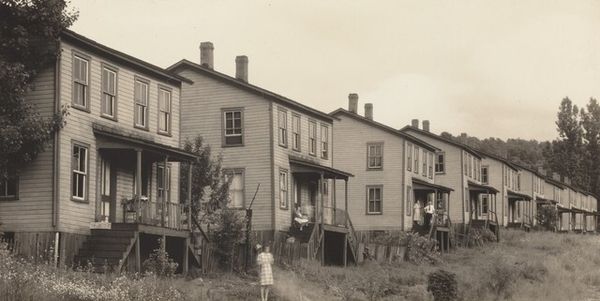
photography
#
architectural landscape
#
building
#
landscape
#
rural
#
urban cityscape
#
photography
#
cityscape
#
realism
#
historical building
Dimensions: image: 23.4 × 29.1 cm (9 3/16 × 11 7/16 in.) sheet: 27.9 × 35 cm (11 × 13 3/4 in.)
Copyright: National Gallery of Art: CC0 1.0
Curator: This photograph is James Welling’s "Grafton, West Virginia," from 1993. Welling’s focus on process is really present. What do you notice first about this image? Editor: I’m immediately struck by how much information is packed into the frame, especially since it's black and white. There’s this house in the foreground, but then the whole town sprawls in the background. What should I be looking at here? Curator: Well, let’s consider Welling’s process. He often manipulates the materials themselves. Think about photography’s relationship to industry, to silver mining, to the creation and consumption of photographic paper. Then, how does he alter the developing process to get these results? Editor: I never really considered that. So you are saying it isn’t just about what is depicted in the image, but the labour and material behind creating the image? Curator: Exactly. The social context is really crucial here. What industries were prevalent in Grafton in 1993? Understanding the economic landscape helps us understand the materiality. The photograph as object becomes entangled with that specific history. It moves beyond a simple image to a document of place and time tied directly to the process and labor of its creation. Does that reshape how you look at it? Editor: Definitely. Knowing that, it makes me think about the economics of photography itself too, the darkroom, chemicals... It adds a layer of complexity I didn’t consider. Thanks! Curator: My pleasure. Thinking about photography's relationship to materials makes it more than just representation; it’s about the real, tangible world.
Comments
No comments
Be the first to comment and join the conversation on the ultimate creative platform.
